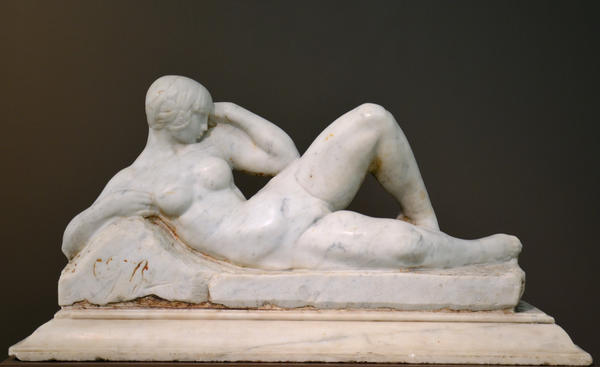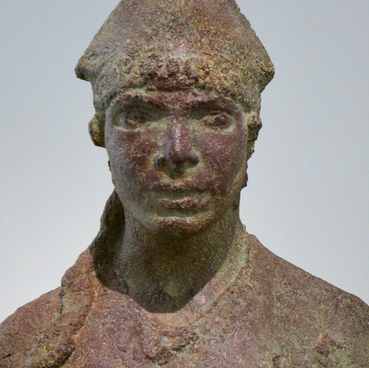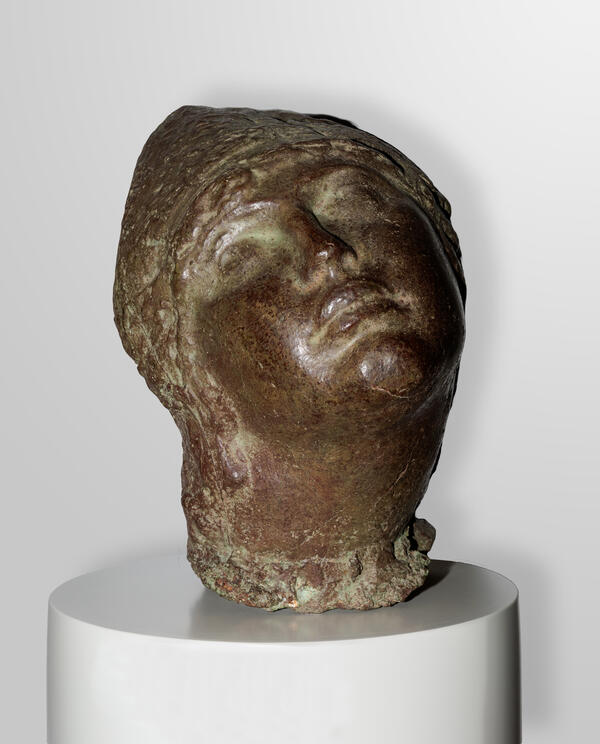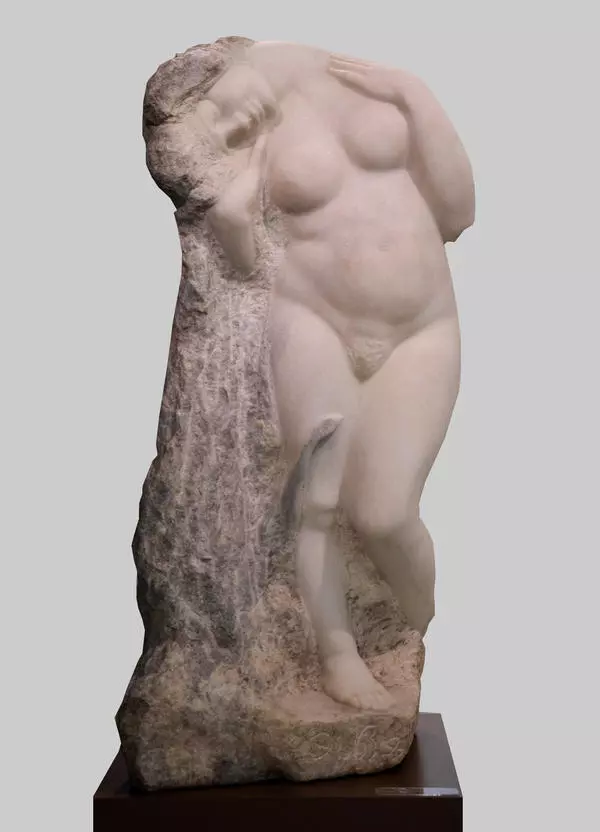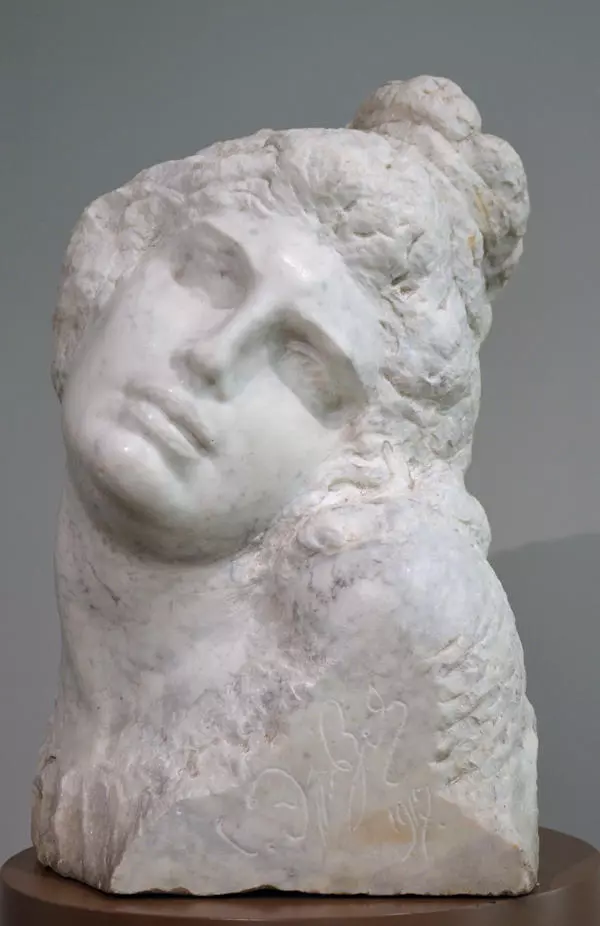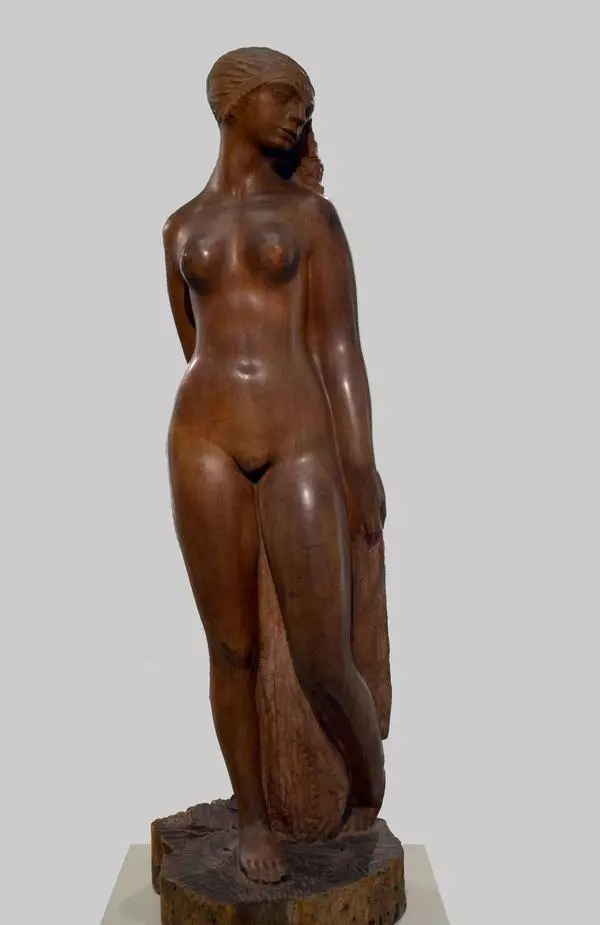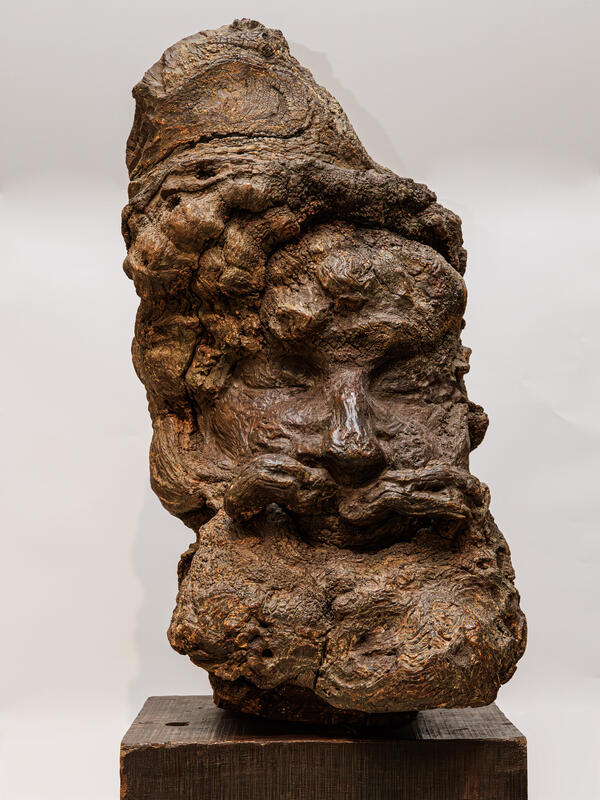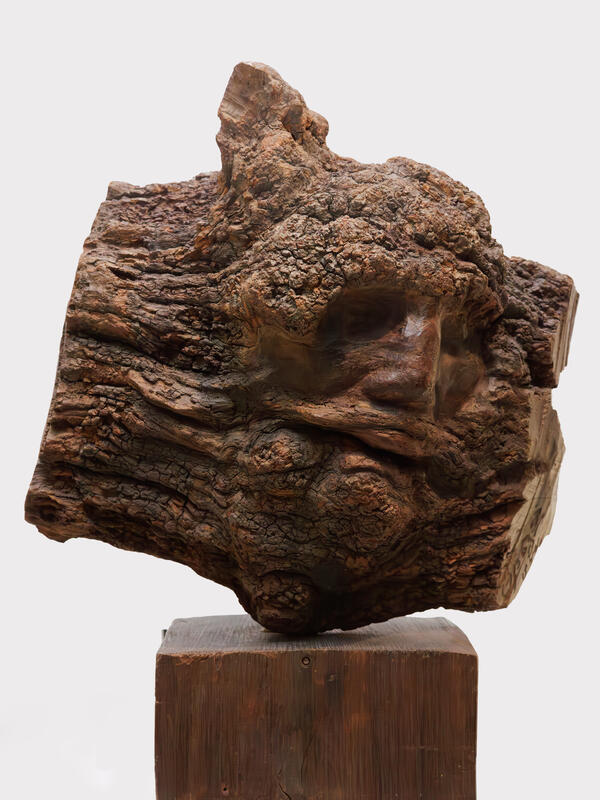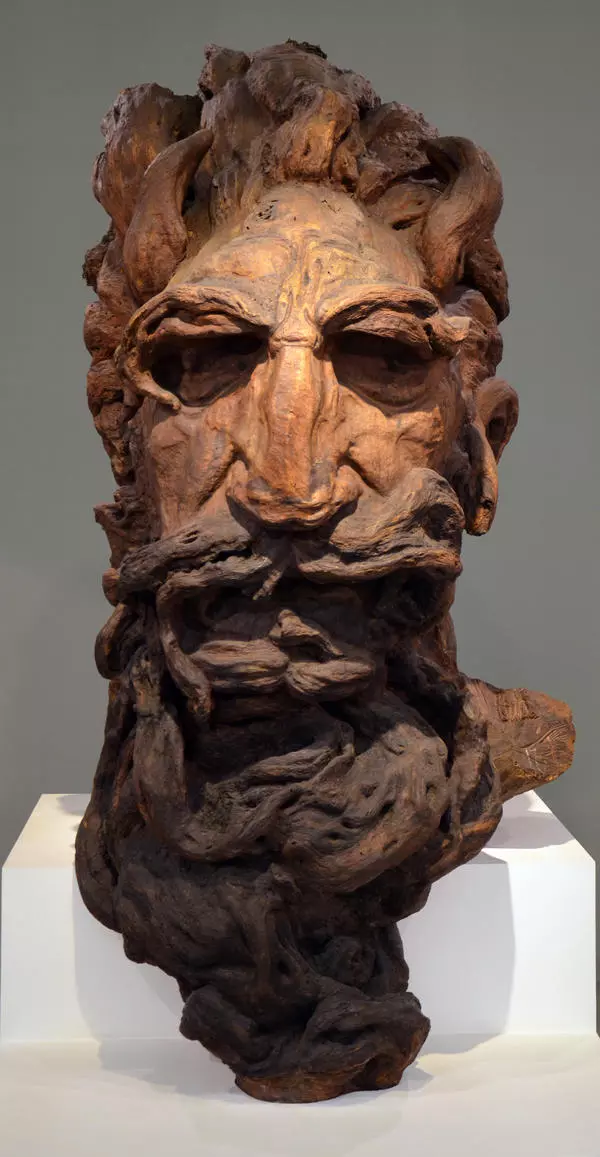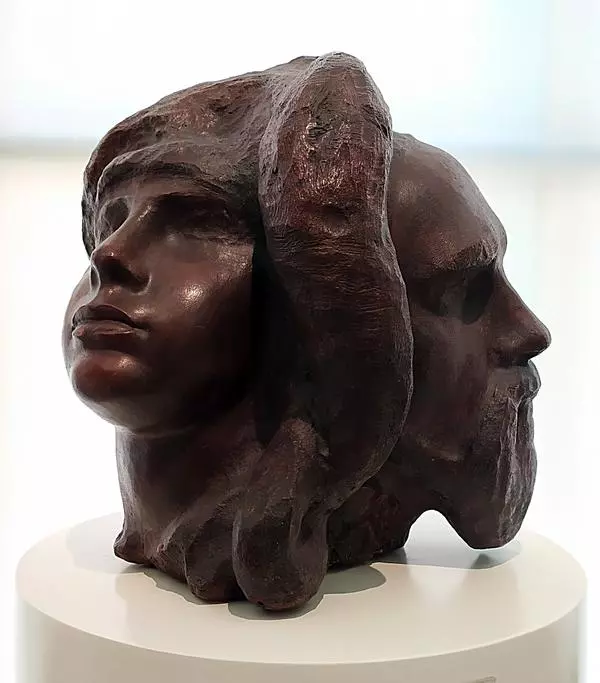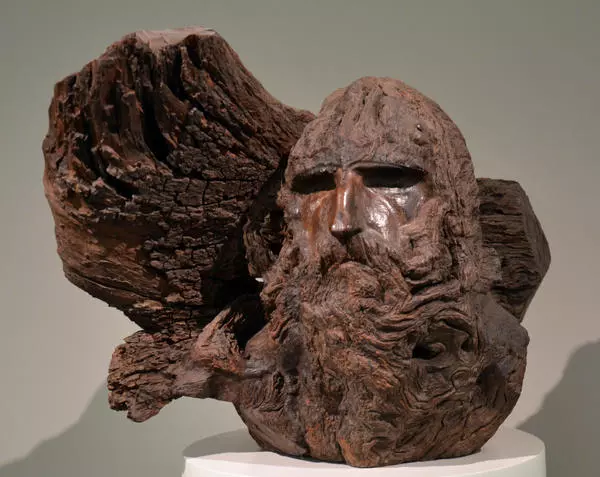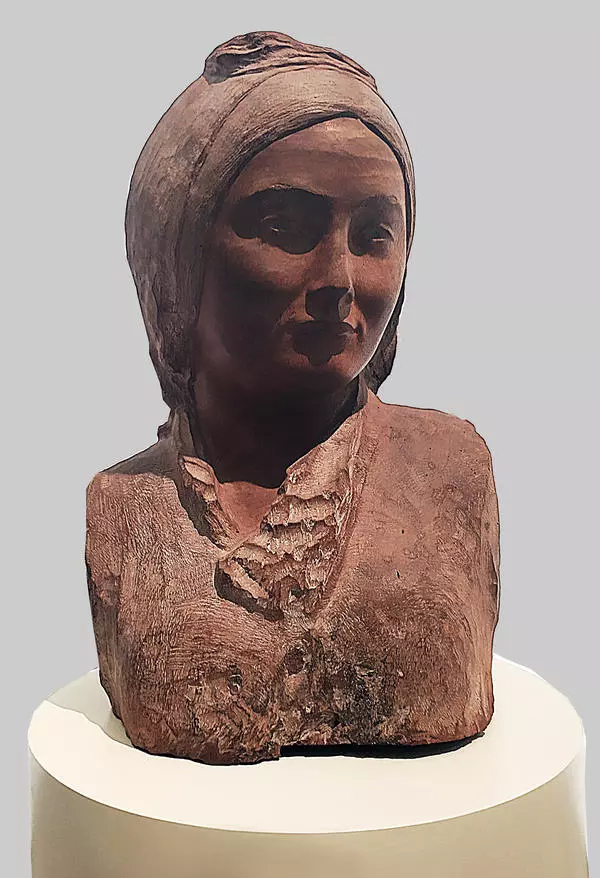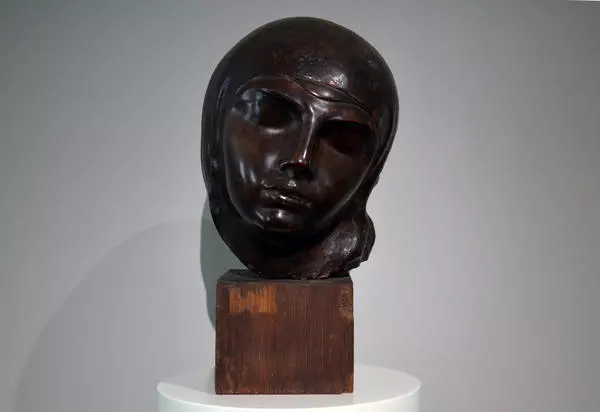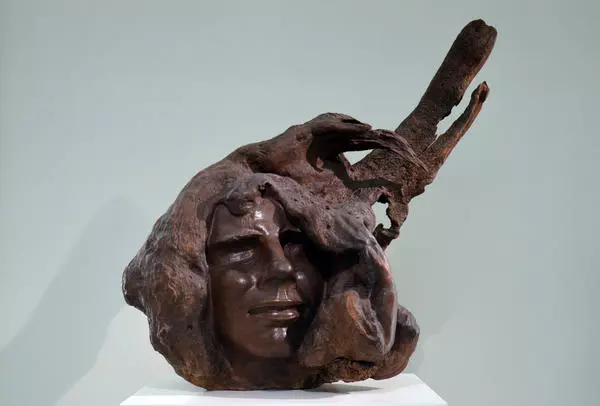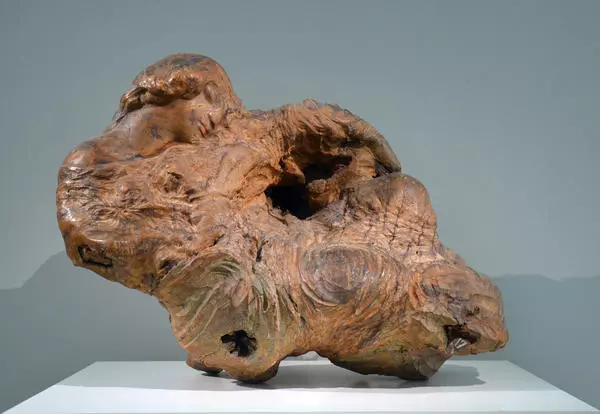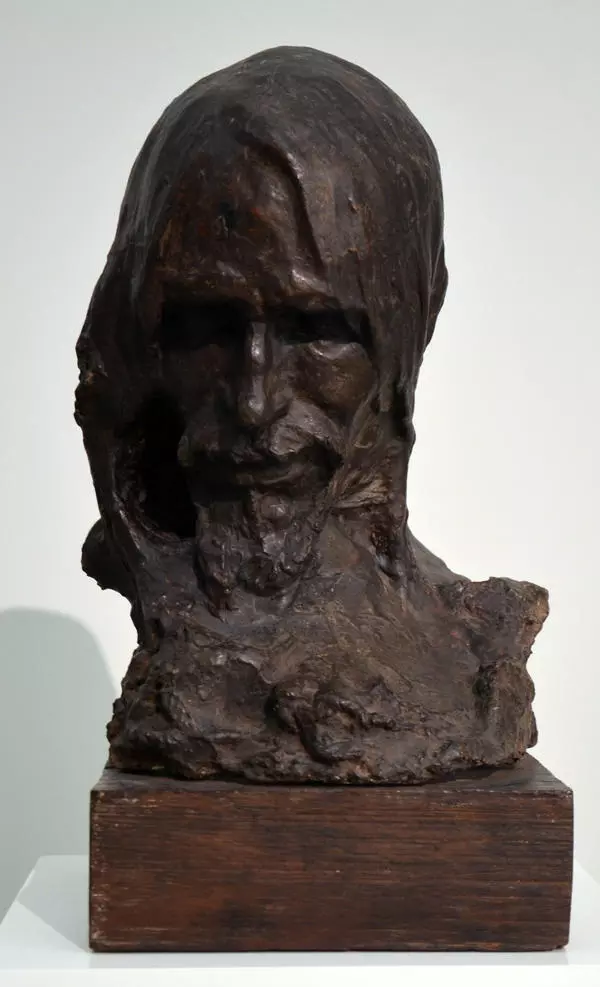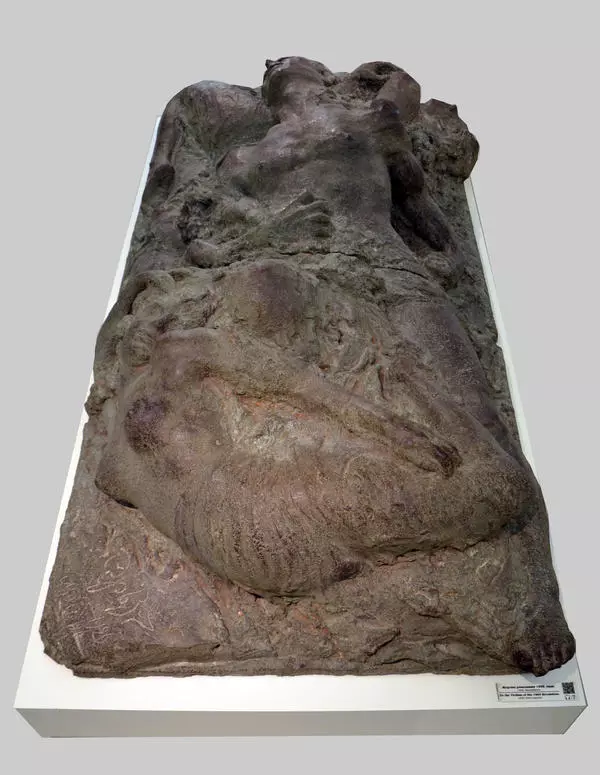Throughout his life, artist Stepan Erzia created both authentic portrait sculptures and the characters inspired by his imagination. The sculptures drawn from a real model are realistic and permeated by the zeal to comprehend the inner life of the model. The sculptures, generated by imagination, are also based on the knowledge of the human anatomy and understanding of the feelings and tribulations of his characters. They rely on the memories and perceptions preserved in the artist’s mind, and reflect his observance, his skill of reinterpreting and expressing creatively what he witnessed.
One of the works of this kind, his early sculpture Repose (1915), was carved under the influence of the masterpieces of Michelangelo Buonarotti, which Erzia saw during his stay in Italy in 1907-1914. It was the time when the artist was acquainting himself with the world artistic heritage, trying various materials for his work and searching for his own individual technique. The sculptural prototypes of Repose are allegoric figures created by Michelangelo, named Morning and Night from Medici Capella in Florence. Duke Lorenzo of Urbino (1492-1519) and Duke Giuliano of Nemours (1479-1516) from Medici lineage, both of whom died young, abide in this Capella. On their coffins, the sculptures of Morning, Day, Evening and Night are installed; they symbolize the circle of a human life, from birth to death.
The naked reclining female bodies Morning and Night by Michelangelo personify the youth and the decline of life. Without copying the idea of the Italian artist, Erzia expressed his own vision of this image: a young woman, exuberantly vibrant, is reposing on the bed. Her posture, turned full face and sidewise to the viewers at the same time, conveys her inner power.
Stepan Erzia chose the same material as Michelangelo for his Repose. The artist learned the technique of marble carving from the best master hands of the Renaissance, whose sculptural creations he saw in the numerous Italian galleries and museums, as well as from the works of his celebrated contemporaries: Rodin, Bourdelle, and Despiau. To master the secret of marble carving, he visited Carrara in 1913, where Italian marble is quarried. Stepan Erzia had a gift of a fine appreciation of the nature of the stone; Anna Golubkina, a sculptor, justly called the artist “the marble-carving maestro of all sculptors”.
Anna Semyonovna was Stepan Erzia’s classmate in the Moscow Painting, Sculpture and Architecture College, when they did the apprenticeship in the studio of Sergey Volnukhin. Being a person of great integrity, an exceptionally strong character and having consistent views on the figurative art, she criticized the works of Stepan Dmitriyevich at times; however, she generally spoke highly about his creative work.
One of the works of this kind, his early sculpture Repose (1915), was carved under the influence of the masterpieces of Michelangelo Buonarotti, which Erzia saw during his stay in Italy in 1907-1914. It was the time when the artist was acquainting himself with the world artistic heritage, trying various materials for his work and searching for his own individual technique. The sculptural prototypes of Repose are allegoric figures created by Michelangelo, named Morning and Night from Medici Capella in Florence. Duke Lorenzo of Urbino (1492-1519) and Duke Giuliano of Nemours (1479-1516) from Medici lineage, both of whom died young, abide in this Capella. On their coffins, the sculptures of Morning, Day, Evening and Night are installed; they symbolize the circle of a human life, from birth to death.
The naked reclining female bodies Morning and Night by Michelangelo personify the youth and the decline of life. Without copying the idea of the Italian artist, Erzia expressed his own vision of this image: a young woman, exuberantly vibrant, is reposing on the bed. Her posture, turned full face and sidewise to the viewers at the same time, conveys her inner power.
Stepan Erzia chose the same material as Michelangelo for his Repose. The artist learned the technique of marble carving from the best master hands of the Renaissance, whose sculptural creations he saw in the numerous Italian galleries and museums, as well as from the works of his celebrated contemporaries: Rodin, Bourdelle, and Despiau. To master the secret of marble carving, he visited Carrara in 1913, where Italian marble is quarried. Stepan Erzia had a gift of a fine appreciation of the nature of the stone; Anna Golubkina, a sculptor, justly called the artist “the marble-carving maestro of all sculptors”.
Anna Semyonovna was Stepan Erzia’s classmate in the Moscow Painting, Sculpture and Architecture College, when they did the apprenticeship in the studio of Sergey Volnukhin. Being a person of great integrity, an exceptionally strong character and having consistent views on the figurative art, she criticized the works of Stepan Dmitriyevich at times; however, she generally spoke highly about his creative work.

